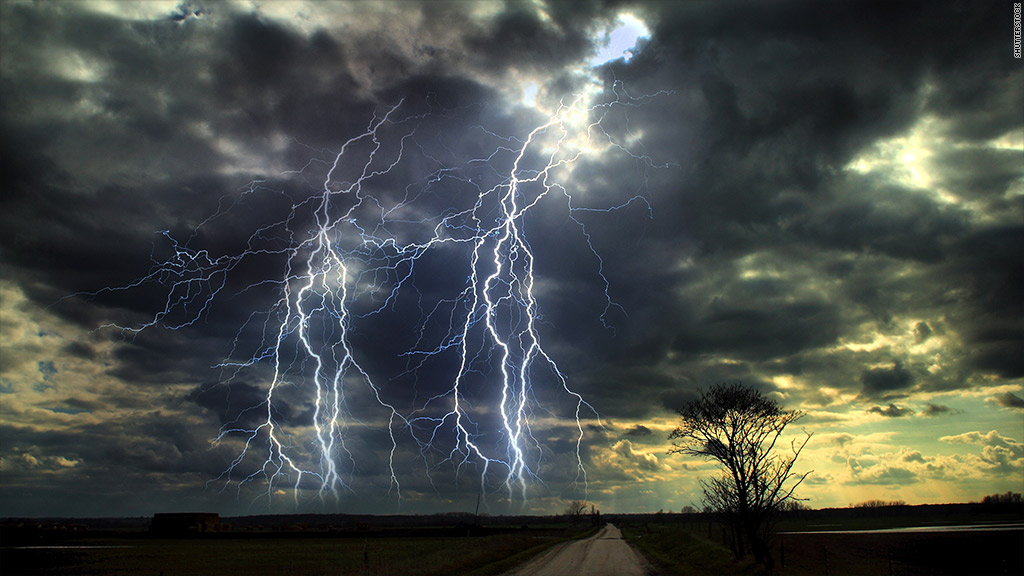
Top execs at big U.S. banks have said that a debt default by the United States is unthinkable and probably won't happen.
But many financial institutions have admitted that they're still engaged in debt disaster planning.
Citigroup (C) CFO John Gerspach said Tuesday morning that the bank "remains hopeful" a deal can be worked out to avoid a default. But he added that "hope is not a plan" and that the bank has prepared for different contingencies over the past few weeks.
So what could happen in a worst-case scenario if the U.S. actually defaults? It's impossible to predict. But here are six ways that financial markets could respond if the U.S. stops paying all of its bills -- even briefly.
Two words of warning though: Thursday's widely quoted debt ceiling deadline may not really be the drop-dead date to get something done. Congress and the Treasury Department could have some wiggle room.
Second, reader discretion should be advised. These outcomes are all pretty terrifying.
Related: Reid says downgrade could be imminent
1. A global stock market crash: Investors have been mostly ambivalent about the government shutdown and the looming default. The Dow is up about 0.5% since the shutdown began earlier this month.
But nearly all analysts and investors I've interviewed over the past two weeks say that if the U.S. fails to make an interest payment on its debt, stock markets around the world will immediately crash. Some fear a quick drop of 1,000 points in the Dow Jones Industrial Average. Stock markets in Asia and Europe would likely be hit too. No stock market would be insulated.
2. A global recession: Plunging stock prices do not necessarily cause economic recessions. But in the worst-case scenario of a technical default on U.S. debt, the blow to world markets would be so extreme that some fear an almost immediate economic slowdown.
"If there's a one day fall in the markets, that can be reversed. But a fall in the world's stock markets and the dislocations that would be caused by non-payment on U.S. debt, that cannot be reversed," said Komal Sri-Kumar, President of the global consulting firm Sri-Kumar Global Strategies. "You will see global growth come to a halt."
Related: The real debt ceiling risk
3. Money market funds collapse: Investors once considered the assets in money market funds as safe as the deposits they put in bank coffers. But the 2008 financial crisis taught the world scary lessons about this market.
After Lehman Brothers unraveled, one money market fund, the Reserve Fund, suddenly didn't have enough cash to give money back to all its investors. In financial parlance, the Reserve Fund "broke the buck" meaning that it didn't have a $1 on hand for every dollar invested.
Get ready for a replay if the U.S. defaults. How would it happen? Andrew Lo, a finance professor at MIT, said that if the U.S. defaults and stock prices drop, investors will race to pull out cash from money market funds. The drop in asset prices from a stock market plunge combined with redemption requests will cause many money market funds to have a funding shortage.
"The consequences could be dangerous for many banks if cash leaves money market accounts and goes out of the financial system entirely for even a short period of time," said Sri-Kumar.
4. A run on the banks: If money market funds are forced to tell investors they can't take out cash while they rebalance their portfolios, investors will immediately race to get their hands on money from wherever they can find it. Major institutions will be forced to protect what they have on hand and will start hoarding it.
The U.S. government guarantees deposits of up to $250,000 through the Federal Deposit Insurance Corp. But just like in the financial crisis, that safeguard will quickly feel insufficient.
5. Some financial institutions will fail: Only the strongest will survive. The government will only bail out so many institutions. In 2008, huge savings and loan Washington Mutual failed and was sold in a fire sale to JPMorgan Chase (JPM). Another huge bank, Wachovia, survived but needed to be rescued by Wells Fargo (WFC). Lehman didn't make it.
If a U.S. default happens and sets the dominoes we've already described in motion, more institutions will probably fail. Most banks have been preparing for this crisis, but there's only so much that contingency planning can do.
Another key wrinkle is the potential collapse of the so-called repo market. Banks and broker-dealers use Treasuries as collateral for most short-term lending, usually overnight loans. Repos are used as the financial backing for most types of trading and derivative contracts.
If the value of short-term Treasuries suddenly plunge and interest rates spike, this market could become destabilized quickly, leading to major losses or a cash crunch among broker-dealers.
6. Lending seizes up: The best FICO score ever will be unlikely to get you a mortgage, auto loan or small business loan if the U.S. defaults. If investors and corporations clamor to redeem cash, banks and other financial institutions will hoard the cash they have and will be wary of lending it out.
Rates of long-term Treasuries might actually fall in the wake of a U.S. default. But that won't mean that consumers will pay less to borrow.
In the fall of 2008, investors raced into U.S. Treasuries, which were seen as the only safe haven. Oddly, many analysts and bond traders expect a similar response to a debt default because there's no clear safe alternative to Treasuries.
But after Lehman Brothers collapsed, only U.S. government intervention got banks to start lending again.


